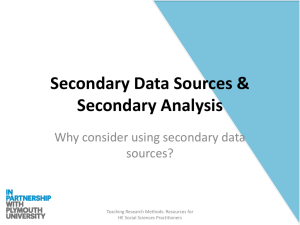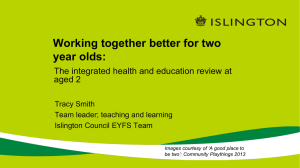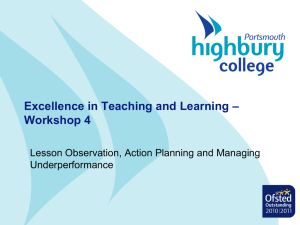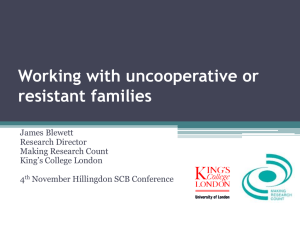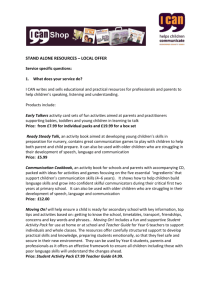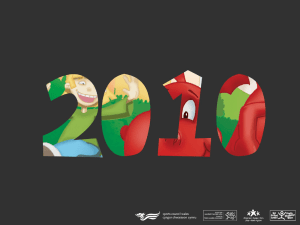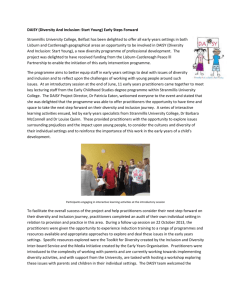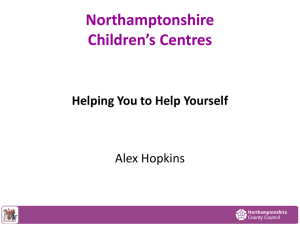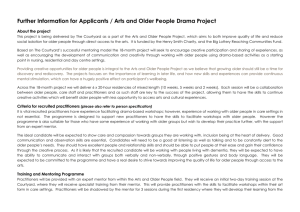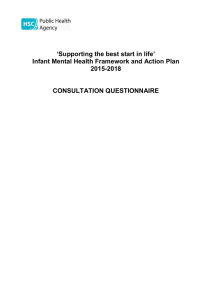COMMUNICATION AND INTERACTION
advertisement
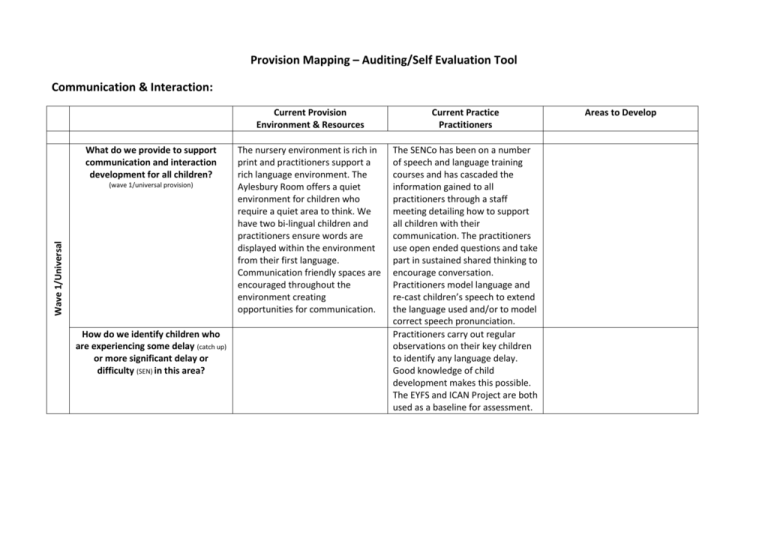
Provision Mapping – Auditing/Self Evaluation Tool Communication & Interaction: What do we provide to support communication and interaction development for all children? Wave 1/Universal (wave 1/universal provision) How do we identify children who are experiencing some delay (catch up) or more significant delay or difficulty (SEN) in this area? Current Provision Environment & Resources Current Practice Practitioners The nursery environment is rich in print and practitioners support a rich language environment. The Aylesbury Room offers a quiet environment for children who require a quiet area to think. We have two bi-lingual children and practitioners ensure words are displayed within the environment from their first language. Communication friendly spaces are encouraged throughout the environment creating opportunities for communication. The SENCo has been on a number of speech and language training courses and has cascaded the information gained to all practitioners through a staff meeting detailing how to support all children with their communication. The practitioners use open ended questions and take part in sustained shared thinking to encourage conversation. Practitioners model language and re-cast children’s speech to extend the language used and/or to model correct speech pronunciation. Practitioners carry out regular observations on their key children to identify any language delay. Good knowledge of child development makes this possible. The EYFS and ICAN Project are both used as a baseline for assessment. Areas to Develop What do we provide for children who need some support to ‘catch up’ in relation to their communication and/or interaction development? Wave 3/SEN Wave 2/Catch up (wave 2/catch up provision) What do we provide to support children with more significant delay or difficulty in relation to their communication and/or interaction development – what is 'additional to or different from' that already provided universally or in 'catch up' provision? (wave 3/SEN provision Choice boards/books are offered in the areas of continuous provision to help children to express their choices. Visual clues are displayed, such as menu cards, to aid understanding. Signs and symbols are displayed throughout the environment. Lots of pictures are displayed throughout the environment. Visual routines are made available. Talking Point resources are used throughout the environment along with other resources including talking photo albums and song baskets (to help child make choices) Practitioners use the ICAN Project to support children with language delay. They adapt their language to support children experiencing some delay in language development. Targeted Learning Plans are devised to set specific targets and offer differentiated provision/resources to encourage communication and interactions. Practitioners offer choices with reduced options such as, an orange or an apple, to support children when expressing choices. Practitioners supporting the very young children use signs and gestures to aid communication Referrals are made to and advice is sought from the Speech and Language Therapist and also the SEN Inclusion Teacher Practitioners focus on developing areas/aspects of language through the implementation of a Targeted Learning Plan and advice/strategies given from the Speech and Language Therapist. All targets and strategies are cascaded to all practitioners through regular team meetings. Targeted Learning Plans are reviewed regularly to ensure progress is being made and current strategies are successful. New targets are then agreed by parents and other professionals involved.


